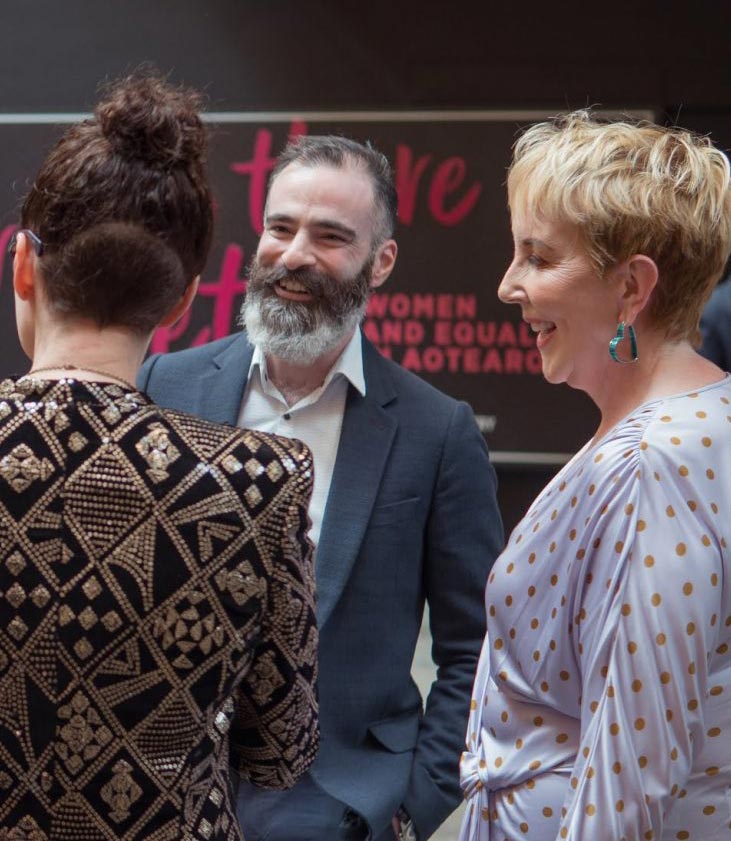In our series on millennials we have learned that this is a purpose-driven generation that will be the largest age group in the workforce in just a few years time. Work is changing significantly, from how, when and where we work. So how are these new ways of working supporting millennials to bring their whole self to work and to focus on teamwork and collaboration?
Global Women Major Partner Fonterra embraced Activity Based Workingwhen it relocated its head office. Their aim was a high-trust, high-performance and values-focused way of working and physical workplace. The environment allows staff ‘to get creative in open, shared spaces […] and to then retreat to focus rooms for more sustained, quiet time as required,’ says Fonterra Ventures Portfolio Manager Joyce Chan. ‘I also enjoy the ability to move around, I think that’s important,’ she adds.
Other Global Women Major Partners are adopting the ‘Agile’ work practice, including Spark and Genesis. Teams using Agile have shown “impressive improvements in terms of deeply embedded customer centricity, dramatically increased speed to market and empowered and engaged employees with greater productivity,” says Spark Managing Director Simon Moutter.
Millennial and Scrum Master Siobhan Mills shared with us how Agile working facilitates continuous improvement and collaborative working at Genesis.
Case Study
Siobhan Mills, Scrum Master – Genesis
Before I started as a Business Analyst in an Agile team, I had never heard of Agile or Scrum. I googled and googled to try to give myself the upper hand before starting my new role. But the best way to learn about an Agile way of working is to be immersed in a team. We weren’t a strict Agile team- we didn’t have a Scrum Master and our Product Owner wasn’t co-located. This posed a few challenges. My innate interest in continuous improvement led me to seek different tools and processes to help the team become better and better.
Before I knew it, I was fulfilling the role of a Scrum Master. Empowered with the time and space to explore how to support teams to become the best they possibly can be is hugely motivating. Although I had invested time and effort into understanding the world of Public Health, the world of Agile drew me in. I am now a SME in Agile- a Scrum Master.
Agile: not just for techies
Today, Agile’s an increasingly common way of getting projects done across many industries. It’s not just for people in tech. When we join a new company or move roles within an organisation, we may be shifting into an Agile team. Understanding a bit about how it all works is becoming progressively important.
There is a perception that Agile can only apply to software development teams. Many Agile tools and processes can be relatively specific to technical teams, but an Agile Mindset can be applied to any type of work.
So, what on earth is Agile?
Agile is all about building small chunks of work, giving it to a customer, getting their feedback then using this to make the product more and more useful. That means we’re constantly validating our work with actual customers, more often than not we’re doing work that genuinely brings value to people. If we do go off on a slight tangent, it will be for a limited period. We work on iterations across set chunks of time, called timeboxes. These are set periods of time, like a fortnight, when we work on a specific element of the project. Then we get customer feedback on what we’ve done across that timebox. If what we’ve produced is useful, customers will validate that. If it’s not, we move on, or ‘pivot’ to something that is of value. This is one of Agile’s strengths – you can try stuff, figure out what works and achieve all this without wasting too many resources.
Strong and diverse teams are essential
We each have our own skillset. Some of us are good with numbers, others with understanding the life cycle of a product, some are great with words! The benefits of being in an Agile team is that you get exposure to all of these different roles. A team should have the ability to take an idea all the way through to market. So the team needs people who are good at understanding the market and it needs people who understand how to market and sell a product.
On any given day, there may be more pressure to complete a particular part of the process. This means all hands on deck in an area which may not necessarily be your own expertise. We are a team – we will succeed, or fail, as a team.
Lifting performance through collaboration
A high performing Agile team uses an Agile Mindset to encourage Transparency, Inspection and Adaptation to lift individual performance and improve on shortcomings. This comes from a place of collaboration and teamwork. I found this invaluable early in my career. Agile’s also given me fantastic exposure to how different roles operate. This matters, given the pressure people can face relatively early on to decide on a career path, often without knowing exactly how this translates in reality.
As a Scrum Master, a lot of my role is about facilitating and coaching. Moving into this space has been an incredibly enlightening experience. I have been encouraged to explore more about my own ways of working alongside supporting teams and their ways of working.
People, people, people
People can be the hardest bit of the job. We all have our own belief systems and values which are inevitably going to lead to different behaviours. I have had the space to explore what my drivers are, why I respond to different situations in various ways and why I always seem to get frustrated talking with ‘that particular person’.
Agile is a team way of working and a team is made up of people. No matter what, we have to interact with different sorts of people. Being a Scrum Master has encouraged me to bring my whole self to work and it’s helped me understand how to use this to my advantage. No matter where I work or how I work, this is invaluable.



